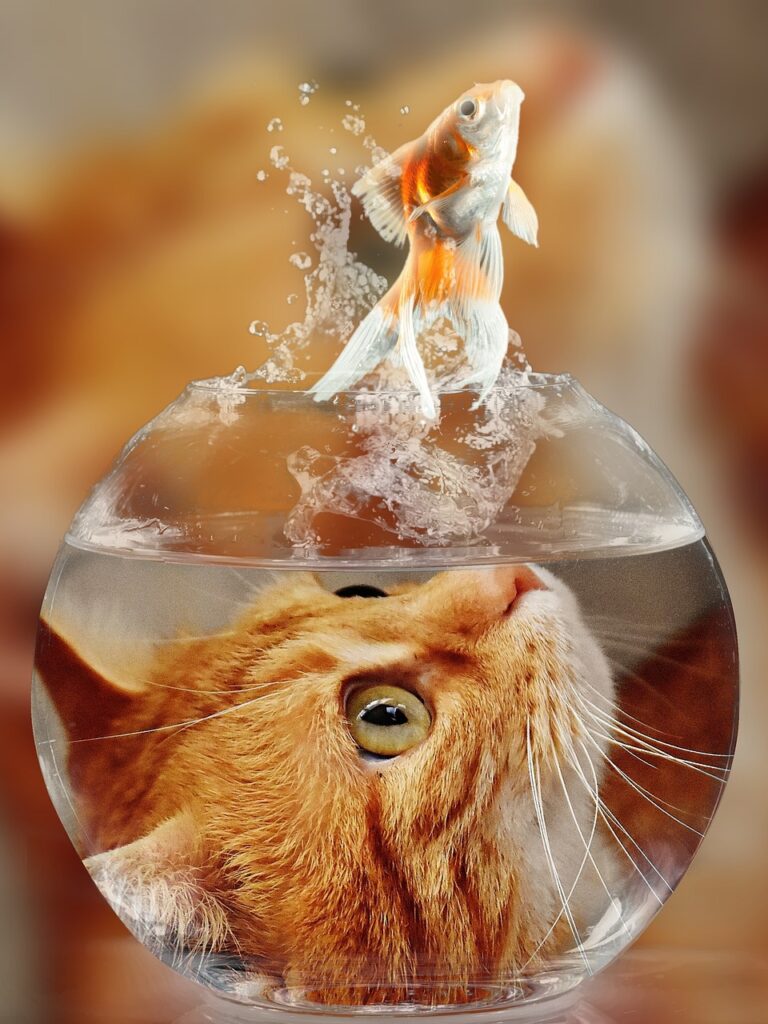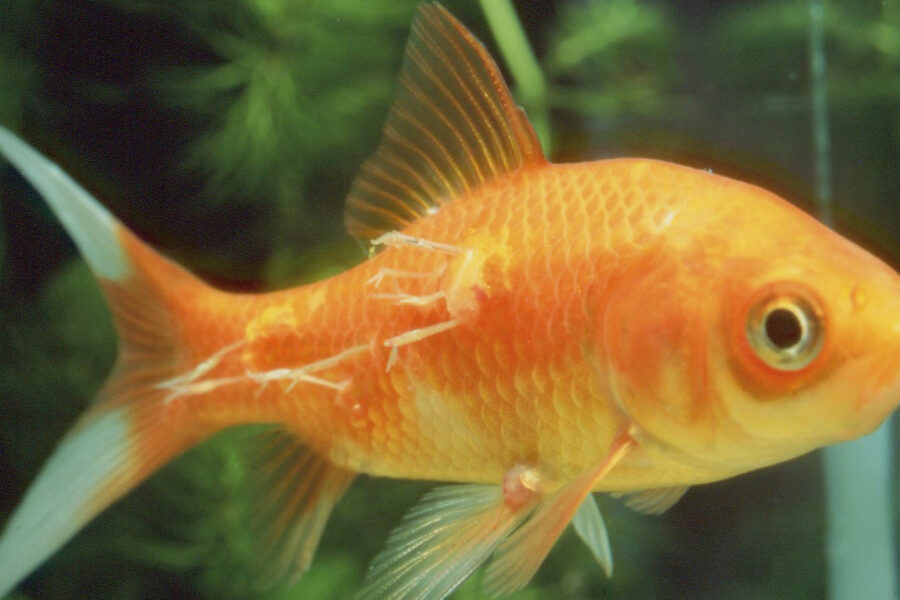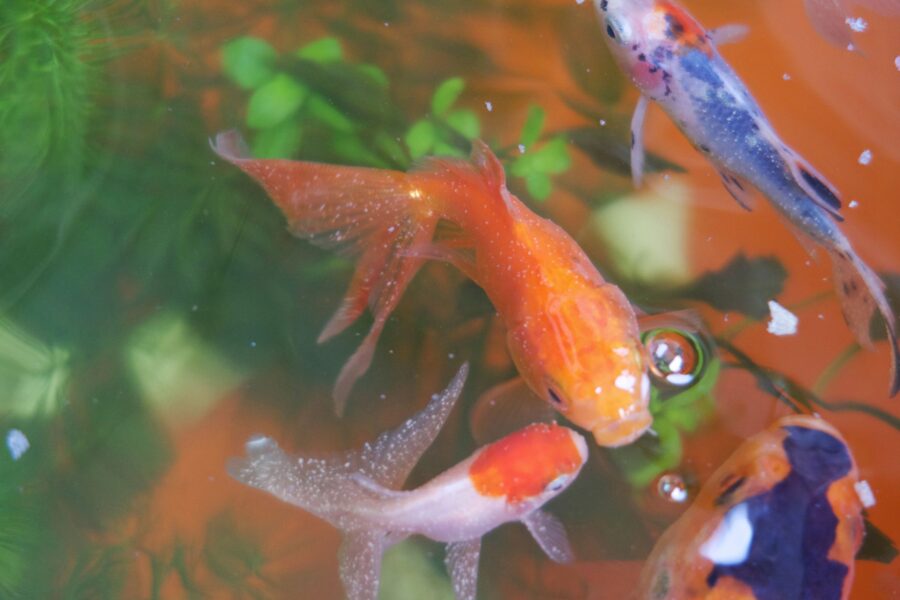
Think aquarium maintenance sounds about as thrilling as watching paint dry? Think again! Welcome to your new favorite hobby, where science, art, and a dash of elbow grease meet to create a thriving underwater utopia. Trust us, there’s nothing quite like the satisfaction of a sparkling tank and happy, healthy fish.
This guide is your treasure map to mastering aquarium care. From selecting the perfect tank to balancing its delicate ecosystem, we’ve got you covered. So, buckle up, future aquarists! We’re about to embark on an exciting journey beneath the water’s surface. And remember, in the world of aquariums, every day is a school day (get it, school? Like a school of fish? We’ll see ourselves out…).
Understanding the Basics

Here we are, diving into the deep end (pun intended) of understanding your watery paradise – your aquarium. Everybody may talk about the beautiful fish, but we know, it’s a lot more complicated than just colorful swimmers. So, let’s plunge in!
The Essential Elements of an Aquarium
First off, an aquarium isn’t just a pretty tank with fish in it. Beyond the swimmers, there’s decor, substrate (the fancy word for the stuff on the bottom), plants, filtration, lighting, and heating. These elements are crucial for a thriving environment. If you’re particularly interested in setting up for goldfish, you might want to explore 5 Best Substrates for Goldfish Tanks of All Sizes and understand the significance of greenery with 10 Best Live Plants for a Goldfish Aquarium. These components all form the lifeline that makes your aquarium not just float, but truly swim.
Understanding Water Chemistry in the Aquarium
Don’t worry, I’m not gonna make you don a lab coat and goggles (tempting, I know). But we do need to talk a bit about pH levels, alkaline and acidic, nitrate levels and such. It’s literally life-and-death for your fish. Think of yourself as a pool cleaner, but for a much smaller and much prettier pool.
The Importance of Biological Balance
In other words, peace and harmony under water. You want your fish, plants, and bacteria (you heard right) to live together in perfect balance. Too much or too little of anything and voila! Trouble stirs in the deep. Ever heard of “too many fish in the sea”? Well, in this case, it’s literal.
I know that might sound like nerd-talk, but don’t panic yet. We’re just skimming the surface. After this quick dip into basics, we’re gonna help you choose an aquarium that doesn’t just look good, but also makes your fish feel like they’ve won the aquatic lottery. Ready for the next dive? Let’s get our flippers moving into the world of aquarium selection.
Choosing Your Aquarium

Choosing your aquarium is a biggie decision, almost akin to picking a new home. After all, it’s where your finned pals will eat, swim, sleep, and possibly do the Macarena! Let’s dive in!
Considerations for Aquarium Size and Material
In the world of aquaria, size does matter. Larger tanks offer more swimming room and are generally easier to manage. Remember, your fish need room to flex their fins! But don’t stop at just size; the material is equally important. While glass stands strong against scratches, acrylic is your go-to for a lightweight and crystal-clear view. If you’re tailoring your tank for goldfish, diving into The Right Tank Size for Your Goldfish and exploring the 10 Best Goldfish Tanks on the Market could give you more insights.
Different Styles and Themes
Style? Yes, even your aquarium has a fashion sense! From jungle styles chock-full of plants to minimalist modern looks, there are countless options. Want to recreate a sunken shipwreck? Go ahead, unleash that inner pirate. Play around with themes and create an aquatic masterpiece that reflects your personality and wows your guests.
Where to Set Up Your Aquarium for Optimal Health
Now, where to park this water-filled chariot? Keep it away from direct sunlight to avoid turning your tank into algae soup. Also, beware of temperature swings, so avoid spots near heaters or AC vents. Keep it accessible for maintenance but safe from overly curious pets or pint-sized humans.
And that’s it! You’re now ready to make an informed aquarium choice, so dive in (pun intended) and begin setting up your underwater kingdom. In the next section, we’ll navigate through the process of setting it up. Snorkels on!
Setting Up Your Aquarium

Great! You’ve picked your aquarium, your mind is buzzing with theme ideas and you’ve got the perfect spot in mind. Now what? Well, it’s time to roll up your sleeves and get into the nitty-gritty of setting things up so that your fish can move into their fancy new home!
The Step-By-Step Process to Set Up Your Aquarium
Setting up an aquarium is like assembling a piece of IKEA furniture; it seems complected, but it’s not. Start with washing the tank and substrate in running water. Then, layer the substrate (gravel, sand, soil depending upon your fish and plants) on the base of your tank, add decorations and plants without going full Picasso, remember, simplicity is key.
Adding Elements: Substrate, Decorations, and Plants
The substrate isn’t just for aesthetics, folks. It’s about functionality. It affects water chemistry and provides an area for beneficial bacteria to live. The decorations and plants are your fish’s environment above all. Fancy castle or a nautical shipwreck? It’s a heck of a fun playground for your aquatic friends. But remember, don’t over-crowd the tank! Your fish need to swim!
Installing Equipment: Pump, Light, and Heater
These three amigos– the pump, light, and heater, will keep your tank ticking. Be advised though, they’re not all “one size fits all!” You’ll need to choose the right equipment based on tank size and fish species. Each has an important role. The pump ensures water circulation and oxygenation, the light supports plant growth, and the heater, well, heats things up particularly for tropical species.
So there you have it. You’ve set up your aquarium all tech-savvy and ready. Your fish are waiting in the wings, and soon they’ll be doing synchronized swimming in their new home. But it’s not all pomp and circumstance just yet. We haven’t discussed maintaining water quality, the lifeline of the tank. Fear not, that’s what we’re covering next — stay tuned!
Maintaining Water Quality

Just like humans need air to breathe, your aquatic friends need fresh and clean water to swim. What’s that saying again? Oh yes, cleanliness is next to fishiness…or something like that!
The Role of Filtration and Aeration in Maintaining Water Quality
Let it flow, let it flow, let it flow! A filtration system does just that. It filters out fish waste and unwanted particles, just like a vacuum cleaner for your water. Next up, we have aeration. Picture it like yoga for your fish, as aeration helps to circulate oxygen throughout the ‘aquayoga’ studio, making sure everyone does their ‘fish posture’ perfectly.
Water Changes: Why, When, and How?
So, how often should we change the water? Weekly, or in some cases biweekly. Why? Welp, you wouldn’t like to swim in your bathroom water for weeks, right? Exactly. Fresh water keeps your fish happy and disease-free. The essential ‘how,’ involves removing 10% to 15% of the tank water and then topping it up with clean water. Just remember to match the temperature to avoid shocking your fish!
Dealing with Water Issues: Algae, Cloudiness, and More
Risking a slight nightmare scenario here but, imagine those unpleasant green patches on your aquarium glass–algae. And those foggy conditions, making your aquarium look like a scene from a spooky movie–that’s cloudiness. Adding certain chemicals or reducing light hours can help combat algae. For cloudiness, review your feeding habits or try a water clarifier.
Now that we’ve dipped our toes into the pristine, clear waters of maintaining quality waters, next on our agenda will be taking care of nutritional needs and health care for our finned friends. Prepare your cookbooks as we dive into the aquatic culinary arts of fish dishes.
Feeding and Health Care

So, you’ve got your tank all set up, your water is looking crystal clear, and your fish are enjoying their new digs. Nice work! But the fun doesn’t stop there. Now it’s time for one of the most important jobs of being a fish parent: feeding and healthcare. Ready to learn more? Let’s dive right in!
What to Feed Your Aquatic Friends
A question that puzzles most first-time aquarium owners is, “What do I feed these little swimmers?” Well, just like humans, those sassy guppies or graceful betta fish crave a diet full of variety. But don’t be tempted by your lunch leftovers; fish require a specially designed diet. From algae wafers for your vegetarian fish to shrimp pellets for those with a carnivorous bent, there’s something for every finned friend. For goldfish owners, enhancing their diet is crucial. Dive into Discover the Best Foods for Your Goldfish, learn more with 5 Best Diet Foods for Your Goldfish, and uncover tasty options in The Best Frozen Foods for Goldfish Nutrition to ensure your aquatic pals get the nutrition they deserve.
Regular Monitoring of Aquatic Health
Feeding done? Great! Now let’s talk health. Imagine Frodo but in the underwater realm. You are their protector, their knight in shining armor. Regular health check-ups like assessing their color, behavior, and appetite can help you catch any issues early. And remember, a healthy fish is a happy fish!
Dealing with Common Fish Diseases
No matter how much love and care you shower, sometimes things can go fishy. The brave Aquarist has one more hurdle to overcome: common fish diseases. Fin rot, Ich, or bloating – sound like alien names? Well, they’re as alien to your fish as they sound! Knowing the symptoms and getting proper medication can keep your fish battalion sailing smoothly.
Onto another important element of aquarium keeping: maintenance. Stick around for the next section where we discuss the significance of regular cleaning and how to tackle common maintenance issues. It’s time to keep that aquatic kingdom spick and span!
Regular Cleaning and Maintenance

The routine that no fish and aquarium enthusiast (or your fish) can live without – the daily, weekly, and monthly cleaning regimen. Strap on your rubber gloves, because this is where the real fun begins (and it’s seriously fun, we promise!).
Routine Daily and Weekly Tasks
To kick things off, there’s the daily and weekly tasks. Just like you wouldn’t let your living room gather dust and debris for days on end, your aquatic friends also prefer a clean habitat (Who knew, right?). It’s a matter of keeping an eye on the water quality, removing dead leaves, feeding the fish, and checking the equipment daily. Once a week, skim off any algae from decor, clean the aquarium glass, and replace about 10-15% of the tank water. These small tasks go a long way in keeping your fish shop-shape and joyful.
Now this might sound a lot, but remember that Rome wasn’t built in a day (or by one exceptionally exhausted aquarist). Consistency is key here; peel away at these tasks every day, and watch your aquarium and its inhabitants thrive.
Monthly Deep Cleaning: A Guide
Once a month, take a minute to thank the Fish Deities for the invention of rubber gloves and dive a little deeper into your cleaning routine. Here’s where you want to scrub the substrate, give the filters a good clean, and check your water parameters (pH, ammonia, nitrites, and nitrates) to make sure everything’s still looking good. You might feel like a chemist, but hey, who said aquarium maintenance wasn’t a science?
Think of this as the spring cleaning of fishtank care. A deep cleaning helps to reset the tank environment, and ensures that your fishy friends can keep swimming happy and healthy.
Dealing with Common Maintenance Problems
Despite your best efforts though, problems will pop up. Algae growth can get out of hand, disease can strike, or annoying water fleas may set up home. When life gives you aquarium problems, turn them into opportunities to learn and grow. Identifying and addressing these issues promptly is as important as the cleaning routine itself.
And remember, when in doubt or dealing with something unknown, reach out for help. Aquarium communities are full of helpful people who’ve been in your shoes. After all, you’re not just an aquarist – you’re part of an underwater-loving family!
Wrap Up
After venturing into fish care 101, we’ve learned that understanding the basics of aquarium care is non-negotiable. While it might feel like you’re preparing for a chemistry exam, mastering key elements like water chemistry and biological balance is essential. Your chosen aquarium’s overall health heavily relies on its siting – an FYI before you get swayed by the myriad sizes, materials, styles, and themes available on the market.
In setting up your perfect underwater world, details are crucial. From the choice of substrate, decorations, and plants, down to the installation of life-support systems like pumps, lights, and heaters – every step counts. Keeping water quality high is an ongoing job that involves regular tasks like water changes and battling algae bloom. Don’t forget, those vibrant, finned creatures in the tank also need balanced diets and regular health checks, because, just like us, they too can call in sick. Rounding up our aquatic expedition, remember that maintaining a sparkling clean tank requires regular cleaning and dealing with common maintenance problems. See? Fish are just like us: they need a clean, comfortable home, regular meals, and sometimes, a doctor’s visit.
Frequently Asked Questions (FAQ)
Question: What are the essential elements of an aquarium?
Answer: The essential elements of an aquarium include the tank, substrate, decor, lighting, filtration system, heater, and of course, the fish.
Question: How often should I change the water in my aquarium?
Answer: Typically, you should change 10-20% of the water in your aquarium every week, although this can vary depending on the size of your tank and the number of fish.
Question: How do I deal with algae in my aquarium?
Answer: Regular cleaning, good lighting, controlling nutrients, and considering animals known to eat algae can help control the growth of algae.
Question: What should I feed my fish?
Answer: Depending on the species, fish can be fed flake foods, pellets, frozen or freeze-dried foods, and live foods.
Question: How can I identify and treat common fish diseases?
Answer: Common diseases like fungal infections, fin rot, and white spot can be identified by changes in fish behavior and appearance. There are various treatments available ranging from changing water conditions to using specific medications.
Question: How often should I clean my aquarium?
Answer: A basic cleaning should be done every week, with a deeper clean (including cleaning the filter, decorations, etc.) done monthly. Regular cleaning helps maintain water quality and a healthy environment for your fish.



